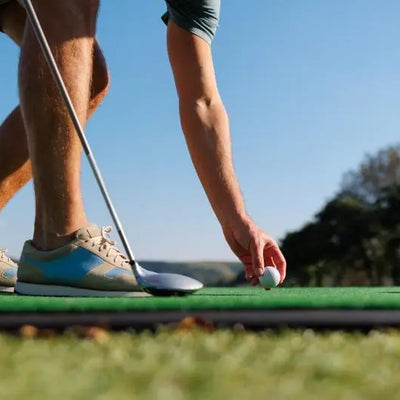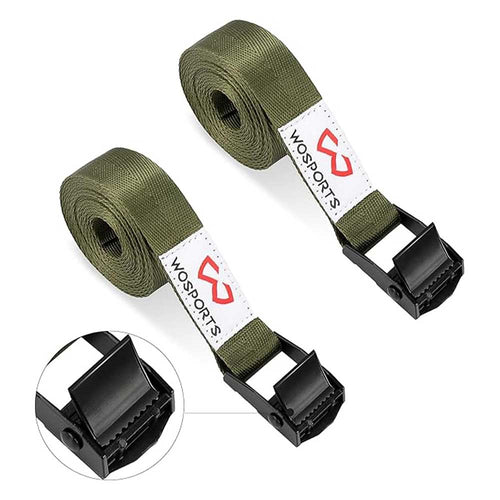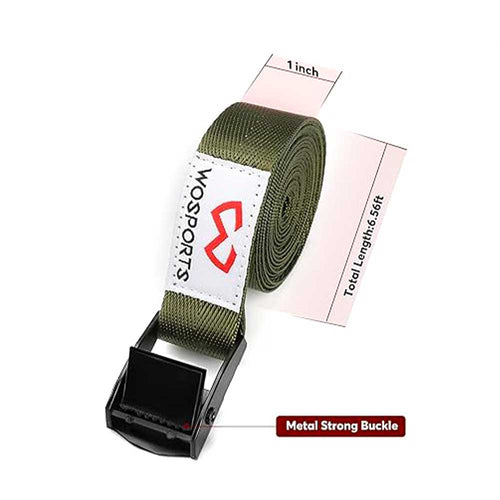How to Improve Your Confidence on the Golf Course
In this guide, we’ll explore actionable strategies to help you build confidence in your golf game. From mental preparation to technical adjustments, we’ll cover everything you need to silence doubt and play your best golf.
Build a Reliable Pre-Shot Routine
A pre-shot routine is your anchor under pressure. It gives your mind and body something familiar to fall back on before each shot. Here’s how to build one:
Visualize Success
Before addressing the ball, close your eyes for 2–3 seconds and visualize the shot you want to hit. See the ball flying toward your target, landing softly, or rolling into the cup. This primes your brain for success.

Focus on Process, Not Outcome
Instead of worrying about hitting the green or avoiding a bunker, focus on the steps required to execute the shot. For example:
- Align my shoulders parallel to the target line.
- Smooth backswing with a full shoulder turn.
- Accelerate through impact.
This keeps your mind engaged in the present moment.
Learn more about how to develop a pre-shot routine>>
Build a Foundation of Skill
Confidence without skill is hollow. To trust your game, you need proof that you can execute under pressure.
Practice with Purpose
- Target-Oriented Drills: Don’t just hit balls—simulate on-course scenarios. For example, aim at specific flags or imagine fairway boundaries.
- Pressure Practice: Gamify your sessions. Challenge yourself to hit 5/10 shots within a 10-foot circle or play “up-and-down” games around the green.
- Weakness Work: Identify your biggest flaws and dedicate 20% of practice time to improving them.
Track Progress
Keep a journal of your practice sessions and rounds. Note what’s working, what’s not, and incremental improvements. Seeing tangible progress fuels confidence.
Take Lessons
Even pros have coaches. A certified instructor can spot technical inefficiencies you might miss and provide drills to address them. Knowing your swing is technically sound eliminates doubt.

Use Technology to Improve Your Game
Trust your distances
A golf rangefinder eliminates yardage doubts. Knowing the exact distance to the flag, hazards, or layup spots helps you make confident club decisions.
Adapt to the course
Tools like the WOSPORTS Golf Laser Rangefinder feature slope measurement, allowing you to adjust yardage based on elevation for better precision.

Boost mental focus
By removing uncertainty, rangefinders for golf reduce hesitation and help you fully commit to your swing, which is crucial for confidence.
Embrace Course Management
Smart decisions breed confidence. Playing strategically minimizes risks and puts you in positions to succeed.
Play to Your Strengths
If you struggle with long irons, lay up to a comfortable wedge distance. If your driver is erratic, opt for a 3-wood or hybrid off the tee.
Plan for Misses
Even pros miss greens and fairways. Anticipate where a bad shot might end up and leave yourself an escape route. For example, aim away from hazards on your “miss side.”
Simplify Targets
Instead of fixating on pins, aim for the fat part of the green or the widest section of the fairway. Hitting “safe” targets builds momentum.
Optimize Physical Preparation
A strong, flexible body supports a confident mind.
Golf-Specific Fitness
- Core Workouts: Planks, Russian twists, and medicine ball rotations improve rotational power.
- Flexibility: Daily dynamic stretches enhance swing mobility.
- Endurance: Walk 18 holes weekly to build stamina.
Nutrition for Focus
- Hydration: Drink 500ml of water every 3 holes. Dehydration causes fatigue and brain fog.
- Snack Smart: Almonds, bananas, and protein bars stabilize blood sugar. Avoid sugary snacks that cause energy crashes.
Dress for Confidence
Apparel Tips: Wear moisture-wicking fabrics to stay dry. Choose shoes with ample support for stability during swings.

Bounce Back Fast From Bad Shots
Everyone hits bad shots. The confident player resets faster.
Have a reset ritual
Create a simple routine to reset after poor shots, such as walking away slowly, taking deep breaths, or repeating a calming mantra.
Shift your self-talk
Replace harsh internal criticism with encouraging words like “learn and move on” or “next shot is what matters.”
Frame mistakes as feedback
Every shot gives you feedback. Instead of labeling it as failure, think of it as part of the learning curve toward consistency.
Learn from More Experienced Golfers
Observe their approach
Pay attention to how seasoned players manage emotions, choose clubs, or strategize a round.
Ask questions
Don’t be afraid to ask better players about how they overcame nerves or what helped them become more confident.
Mirror their mindset
Confidence often stems from experience, but also from attitude. Mimicking positive body language, pace of play, and calm demeanor can influence your own.

Reflect After Each Round
Analyze your decisions
Take 10–15 minutes post-round to think through the shots you handled well and the ones that caused you to lose composure.
Record confidence-building moments
Logging solid shots, recoveries, or strategic decisions gives you proof that you are improving.
Use the feedback
Let those lessons guide your next round or range session so you’re always building, not just replaying mistakes.
Quick FAQ
Q1: How do I stay confident after a bad hole?
A: Use a “mental reset” phrase like “new hole, new mindset.” Focus only on the current shot—not your score.
Q2: Can a beginner really use a rangefinder effectively?
A: Absolutely! Devices like WOSPORTS are built for ease. Just point, press, and trust the number.
Q3: What’s the biggest confidence killer in golf?
A: Trying to be perfect. Golf is a game of misses. Learn from them and keep playing with belief.
Q4: How long does it take to build real confidence on the course?
A: With consistent mental practice and reflection, you can see improvement in 4–6 weeks. Like any skill, it compounds over time.
PREVIOUS ARTICLE

How to Improve Your Short Game and Lower Your Score
NEXT ARTICLE

Best Golf Tips for Seniors: Essential Golfing Advice for Senior Golfers





























Leave a comment